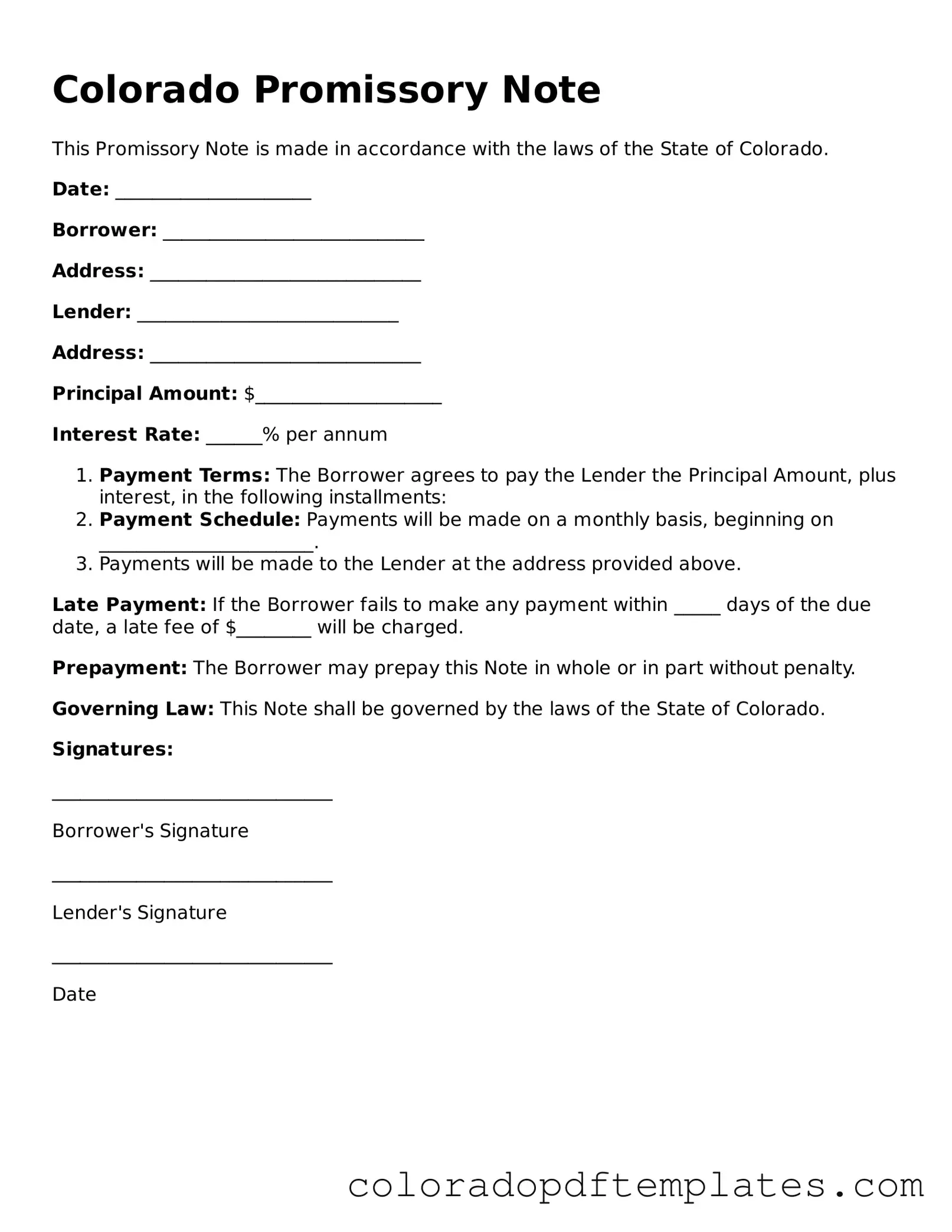What is a Colorado Promissory Note?
A Colorado Promissory Note is a legal document in which one party agrees to pay a specific amount of money to another party at a designated time or on demand. This note outlines the terms of the loan, including the principal amount, interest rate, payment schedule, and any applicable fees.
Who uses a Promissory Note in Colorado?
Individuals and businesses commonly use Promissory Notes. They can serve various purposes, such as personal loans between friends or family members, business loans, or real estate transactions. Both lenders and borrowers benefit from having a written agreement to clarify their rights and obligations.
What are the key components of a Colorado Promissory Note?
A typical Colorado Promissory Note includes the following components:
-
Principal Amount:
The total amount borrowed.
-
Interest Rate:
The percentage charged on the principal amount.
-
Payment Schedule:
The frequency and amount of payments.
-
Maturity Date:
The date by which the loan must be fully repaid.
-
Signatures:
The signatures of both the borrower and lender.
Is a Promissory Note legally binding in Colorado?
Yes, a Promissory Note is legally binding in Colorado, provided it meets certain requirements. Both parties must agree to the terms, and the document should be signed by both the borrower and the lender. Additionally, it should contain clear terms regarding repayment and other conditions.
Do I need to have a lawyer draft my Promissory Note?
While it is not legally required to have a lawyer draft a Promissory Note, it is often advisable. A lawyer can ensure that the document complies with state laws and adequately protects the interests of both parties. If the amount involved is significant or if there are complex terms, seeking legal assistance can be beneficial.
Can I modify a Promissory Note after it has been signed?
Yes, a Promissory Note can be modified after it has been signed, but both parties must agree to the changes. It is best to document any modifications in writing and have both parties sign the amended agreement to avoid disputes in the future.
What happens if the borrower defaults on the Promissory Note?
If the borrower defaults, the lender has the right to take legal action to recover the owed amount. This may include filing a lawsuit to collect the debt. The specific actions available to the lender depend on the terms outlined in the Promissory Note and applicable state laws.
Are there any specific state laws governing Promissory Notes in Colorado?
Yes, Colorado has specific laws that govern Promissory Notes, including the Uniform Commercial Code (UCC). These laws address issues such as interest rates, default procedures, and enforcement of the note. It is important for both parties to be aware of these laws to ensure compliance.
Can a Promissory Note be secured or unsecured?
A Promissory Note can be either secured or unsecured. A secured note is backed by collateral, such as property or assets, which the lender can claim if the borrower defaults. An unsecured note does not have collateral backing it, making it riskier for the lender.
Colorado Promissory Note forms can be obtained from various sources, including legal stationery stores, online legal document providers, or through legal professionals. It is essential to ensure that the form is up-to-date and complies with Colorado laws.
